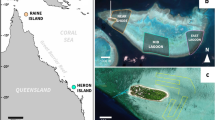Abstract
Ultrasonic telemetry using stationary positioning systems allows several fish to be tracked simultaneously, but systems that are incapable of sampling multiple frequencies simultaneously can record data from only one transmitter (individual) at a time. Tracking several individuals simultaneously thus results in longer intervals between successive position fixes for each fish. This deficiency leads to loss of detail in the tracking data collected, and may be expected to cause loss of accuracy in estimates of the swimming speeds and movement patterns of the fish tracked. Even systems that track fish on multiple frequencies are not capable of continuous tracking due to technical issues. We determined the swimming speed, area occupied, activity rhythm and movement pattern of cod (Gadus morhua) using a stationary single-channel positioning system, and analysed how estimates of these behavioural parameters were affected by the interval between successive position fixes. Single fish were tracked at a time, and position fixes were eliminated at regular intervals in the original data to generate new data sets, as if they had been collected in the course of tracking several fish (2–16). In comparison with the complete set, these data sets gave 30–70% decreases in estimates of swimming speed depending on the number of fish supposedly being tracked. These results were similar for two individuals of different size and activity level, indicating that they can be employed as correction factors to partly compensate for underestimates of swimming speed when several fish are tracked simultaneously. Tracking `several' fish only slightly affected the estimates of area occupied (1–15%). The diurnal activity rhythm was also similar between the data sets, whereas details in search pattern were not seen when several fish were tracked simultaneously.
Similar content being viewed by others
References
Baras, E., 1998. Selection of optimal positioning intervals in fish tracking: an experimental study on Barbus barbus. Hydrobiologia 371/372: 19-28.
Bradbury, C., J. M. Green & M. Bruce-Lockhart, 1995. Home ranges of female runner, Tautogolabrus adspersus (Labridae), as determined by ultrasonic telemetry. Can. J. Zool. 73: 1268-1279.
Clark, D. S.& J.M. Green, 1990. Activity and movement patterns of juvenile Atlantic cod, Gadus morhua, in Conception Bay, Newfoundland, as determined by sonic telemetry. Can. J. Zool. 68: 1434-1442.
Hawkins, A. D. & G. G. Urquhart, 1983. Tracking fish at sea. In McDonald, A. G. & I. G. Priede (eds), Experimental Biology at Sea. Academic Press, London: 103-166.
Hawkins, A. D., D. N. MacLennan, G. G. Urquhart & C. Robb, 1974. Tracking cod, Gadus morhua L., in a Scottish sea loch. J. Fish Biol. 6: 225-236.
Juell, J.-E. & H. Westerberg, 1993. An ultrasonic telemetric system for automatic positioning of individual fish used to track Atlantic salmon (Salmo salar L.) in a sea cage. Aquacult. Eng. 12: 1-18.
Lagardère, J.-P., J.-J. Ducamp, L. Favre, J. Mosneron Dupin & M. Spérando, 1990. A method for the quantitive evaluation of fish movements in salt ponds by acoustic telemetry. J. exp. mar. Biol. Ecol. 141: 221-236.
Lucas, M. C. & E. Baras, 2000. Methods for studying spatial behaviour of freshwater fishes in the natural environment. Fish and Fisheries 1: 283-316.
Løkkeborg, S., 1998. Feeding behaviour of cod, Gadus morhua: activity rhythm and chemically mediated food search. Anim. Behav. 56: 371-378.
Løkkeborg, S. & A. Fernö, 1999. Diel activity pattern and food search behaviour in cod, Gadus morhua. Envir. Biol. Fish. 54: 345-353.
Løkkeborg, S., K. Skajaa & A. Fernö, 2000. Food-search strategy in ling (Molva molva L.): crepuscular activity and use of space. J. exp. mar. Biol. Ecol. 247: 195-208.
MacLennan, D. N. & A. D. Hawkins, 1977. Acoustic position fixing in fisheries research. Rapp. P.-v. Reun. Cons. int. Explor. Mer 170: 88-97.
Sarno, B., C. W. Glass, G. W. Smith, W. R. Mojsiewicz & A. D. F. Johnstone, 1994. A comparison of the movements of two gadoid species in the vicinity of an underwater reef. J. Fish Biol. 45: 811-817.
Smith, G. W., G. G. Urquhart, D. N. MacLennan & B. Sarno, 1998. A comparison of theoretical estimates of the errors associated with ultrasonic tracking using a fixed hydrophone array and field measurements. Hydrobiologia 371/372: 9-17.
Author information
Authors and Affiliations
Corresponding author
Rights and permissions
About this article
Cite this article
Løkkeborg, S., Fernö, A. & Jørgensen, T. Effect of position-fixing interval on estimated swimming speed and movement pattern of fish tracked with a stationary positioning system. Hydrobiologia 483, 259–264 (2002). https://doi.org/10.1023/A:1021312503220
Issue Date:
DOI: https://doi.org/10.1023/A:1021312503220




